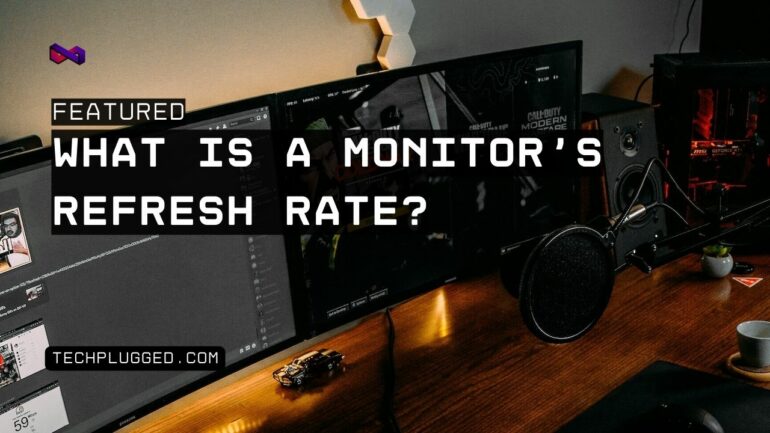Choosing the right monitor depends on understanding key specs like refresh rate. This guides explains what refresh rate is and why it matters for both productivity and gaming.
Table of Contents
What is a monitor’s refresh rate?
Refresh rate refers to how many distinct frames a monitor can display per second, measured in Hz. It’s not the same as framerate – how many frames the computer sends the monitor per second.
Higher refresh rates allow sharper imagery with less motion blur. But required rates depend on the monitor’s intended use.
For creative, office, or casual use, 60Hz is fine. Gaming demands higher rates to prevent lag and tearing. If your PC outputs 100 FPS but your monitor only displays 65 Hz, you lose frames.
Casual gamers can get by with 60Hz. But most now want 1080p resolution with at least a 120Hz or 144Hz refresh rate. This ensures smooth gameplay for mid-range systems.
PC gamers focused on shooters or competition need even faster rates. Around 200Hz suits high-end rigs well. Just don’t exceed 240Hz for tournaments, since that differs from standard specs.
Ultimately, think about your gaming habits. Competitive multiplayer demands maximizing refresh rate to match FPS outputs. More cinematic games emphasize visuals over rates above 120Hz.
Additionally, GPU choice affects desirable rates. Running a 3090 TI on a 165Hz monitor wastes potential. But weaker GPUs can’t leverage 240Hz well.
Consider if you value consistency or cutting-edge speed. High refresh 4K monitors exist but cost thousands. Prioritize monitor specs that align with your whole setup.
Getting the right monitor takes research. Understanding refresh rate clarifies which rates suit your needs rather than pursuing the maximum possible.


